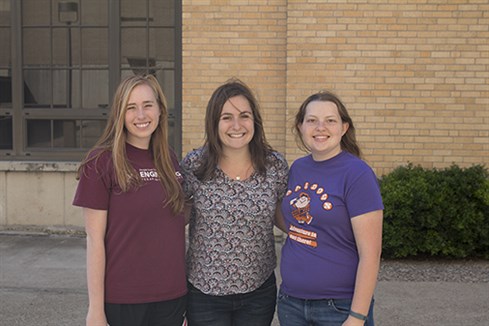 A student group in the Department of Computer Science and Engineering at Texas A&M University created a device to thwart potential attackers as a project in their microcomputer systems course, taught by Dr. Jyh-Charn (Steve) Liu, professor in the department.
A student group in the Department of Computer Science and Engineering at Texas A&M University created a device to thwart potential attackers as a project in their microcomputer systems course, taught by Dr. Jyh-Charn (Steve) Liu, professor in the department.
Studies have shown that across the country, many university students, staff and faculty feel unsafe when walking in or near campus. Furthermore, many are unaware of which places on campus are the most dangerous. This became the motivation behind the project.
Lauren Voight, Rebecca Schofield and Sarah Beardsley came up with an idea for a wearable device with a corresponding Android app, which would allow the user to feel protected in unsafe areas around campus that are not well lit.
The device, which straps to your wrist, has a bright LED light to stun an attacker, as well as a camera to take a photo of the user’s surroundings.
The app also has a panic button for added convenience. Once the panic button is pressed, whether on the app or the device, the camera will take several photos, lights will flash and a loud buzzer will go off. Immediately, an “SOS” text message will also be sent out to campus police as well as pre-loaded emergency contacts that include your GPS location, a date and time stamp for reference, and the photos taken from the device. The camera fixed in the wearable device is an infrared camera, which means it can take clear photos at night without having to use a flash.
Similar to an activity tracker, the device is connected to the application via Bluetooth. The application was designed with functionality in mind and includes a map, which shows the user’s current location, nearby areas with a low-crime rate and high-crime areas on campus. These are color-coded for reference.
“The red dots show high-crime areas, the green dots show your current location and the blue dots show safe areas on campus,” Beardsley said. “For this, data was gathered from the Clery Act.”
The Clery Act is a consumer protection law that aims to provide transparency around campus crime statistics. This type of information is available to the general public, but not many are aware. The group used this data while building the application and pitching their project.
Though the group will not pursue the implementation of this project past the course, they learned a lot during the process and have a greater appreciation for their smart phones.